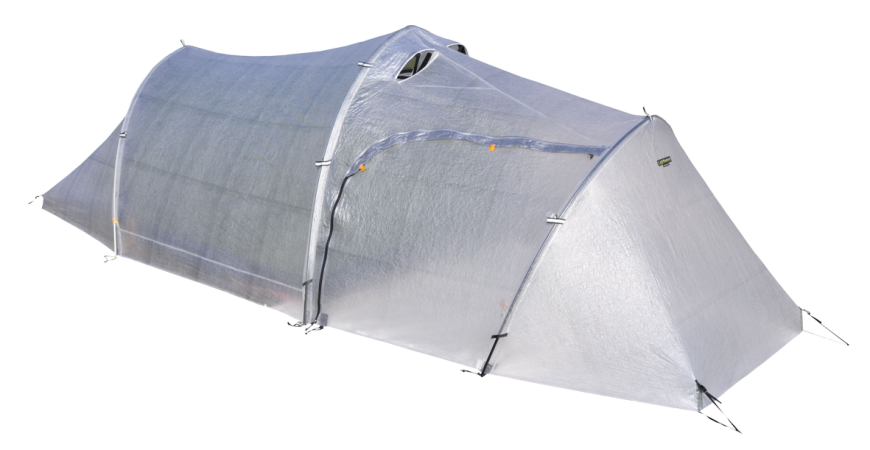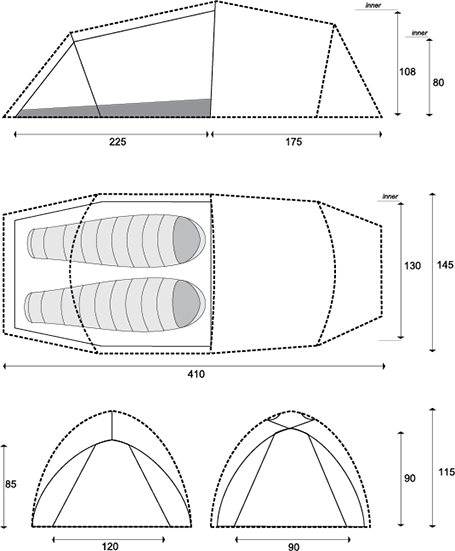Flysheet
18 g/m2, Cuben (dispersed Dyneema yarn laminate)
10000 mm hydrostatic head
The vapor flysheet is made from Cuben, a non-woven fabric originally developed as a spinnaker cloth in the America cup. It is extremely lightweight, exceptionally strong, and completely UV-stable. The only downside is the cost! Compared with the 30 denier high-tenacity nylon used in our hyper tents, Cuben is a third of the weight and has twice the tear strength.
Groundsheet
70 g/m2, 40d nylon ripstop, TPU laminated
10,000 mm hydrostatic head, factory-taped seams
The vapor groundsheet is made from a 40-denier nylon ripstop with a laminated thermo-plastic polyurethane (TPU) coating. TPU coatings have greater bonding durability (to the substrate fabric) and better abrasion resistance than conventional liquid-applied PU coatings. This is a much tougher fabric than it looks. This fabric is the same as that used in our hyper range.
The t20 vapor xt has three 9.70 mm DAC Featherlight NCL poles. These lightweight poles have good stiffness due to the large diameter, and the DAC alloy has an excellent ability to absorb energy making the poles very resilient.
Pegs are a vital component of every tent. Tunnel tents are of course completely dependent upon solid anchors at front and rear, but a self-supporting geodesic, too, needs to be prevented from blowing away in the breeze. Lightwave offers a range of different pegs with the t20 vapor xt to ensure it can be secured in all ground conditions.


